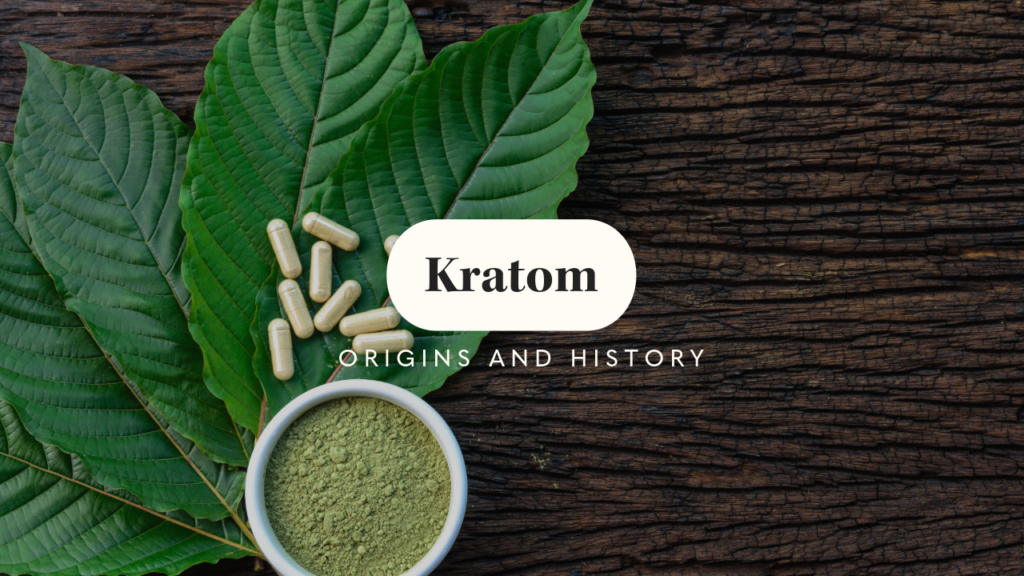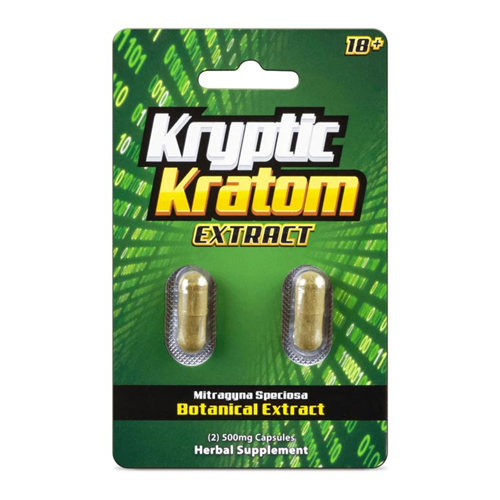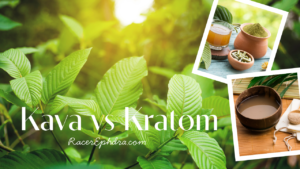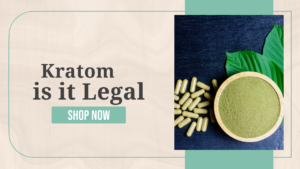Kratom, scientifically known as Mitragyna speciosa, is a tropical tree native to Southeast Asia, intriguing many with its unique origins and widespread use across the globe. Its leaves, traditionally chewed or brewed into tea, were primarily utilized by local manual laborers within Southeast Asia to fend off fatigue and enhance productivity. Additionally, its role in socioreligious ceremonies and various traditional medical treatments, such as morphine dependence in Thailand, underscores the cultural and historical significance of kratom in its native lands.
Exploring where kratom originated reveals its deep-rooted history in Southeast Asia and the spread of its use for recreational purposes in Western countries. As this article delves into the geographic origins, traditional uses, and the journey of kratom to becoming a novel recreational compound in the U.S., readers will discover what kratom is made from and the primary reasons behind its global popularity.

Historical Background of Kratom
- Origin and Discovery
- Kratom, scientifically recognized as Mitragyna speciosa, is indigenous to Southeast Asia, marking its historical presence in the region’s lush landscapes.
- The Western world was introduced to Kratom in 1831 by Dutch botanist Pieter Willem Korthals, who was among the first to document the plant, highlighting its significance outside its native habitat.
- Traditional Uses and Cultivation
- In Southeast Asia, local manual laborers traditionally utilized the chopped fresh or dried leaves of Kratom, either by chewing or brewing them into tea. This practice was aimed at combating fatigue and enhancing work productivity, demonstrating the plant’s integral role in daily life.
- Socioreligious ceremonies and medical treatments, such as addressing morphine dependence in Thailand and serving as an opium substitute in Malaya, have leveraged Kratom preparations for centuries. These uses underscore the plant’s versatile application in traditional medicine.
- By the early 20th century, people in Thailand began cultivating Kratom, adapting to its climate requirements and contributing to its spread within the region.
- Scientific Investigation and Active Compounds
- The isolation of mitragynine, Kratom’s main active alkaloid, was accomplished by British chemist Ellen Field in 1921. This discovery laid the groundwork for understanding Kratom’s pharmacological effects and its potential therapeutic applications.
- Historically, Kratom has been used in herbal medicine since at least the 19th century, with methods of consumption including chewing, smoking, and tea preparation. These practices highlight the plant’s longstanding significance in herbal medicine traditions.
This section emphasizes Kratom’s deep-rooted history in Southeast Asia, its discovery and documentation by Western scientists, and its traditional uses that span centuries. The cultivation practices and scientific investigations into its active compounds further illustrate the complex relationship between humans and Kratom, showcasing its historical and ongoing significance.
Geographic Origins and Distribution
Kratom, scientifically known as Mitragyna speciosa, thrives in the lush, tropical environments of Southeast Asia, demonstrating a preference for the region’s climate and soil conditions. The geographic distribution and native habitats of Kratom are essential to understanding its origins and widespread use.
- Native Regions:
- Thailand: A significant portion of Kratom’s history and traditional use originates from Thailand, where the tree is a native species, deeply integrated into the local culture and practices.
- Malaysia and Myanmar: These countries, along with Thailand, form part of the core region in Southeast Asia where Kratom naturally grows. The plant’s presence in these areas underscores its adaptability and significance in the region’s biodiversity.
- Indonesia: Surprisingly, Indonesia emerges as a pivotal player in the global Kratom market, contributing approximately 95% of the supply. This fact highlights Indonesia’s optimal growing conditions for Kratom and its substantial role in the plant’s cultivation and distribution.
- Botanical Characteristics:
- Belonging to the Rubiaceae family, the same as the coffee tree, Kratom exhibits robust growth patterns. It can reach up to 50 feet in height and spread over 15 feet, showcasing its significant stature as a tropical tree. These characteristics not only reflect the tree’s adaptability to its environment but also its potential yield for harvest and use.
This detailed exploration into the geographic origins and distribution of Kratom reveals the intricate relationship between the plant and its native habitat. The regions of Thailand, Malaysia, Myanmar, and Indonesia not only provide the climatic conditions conducive to Kratom’s growth but also play a crucial role in its historical and contemporary significance. The understanding of these factors is vital for appreciating the plant’s journey from a regional herb to a subject of global interest.
Traditional Uses of Kratom in Southeast Asia
In Southeast Asia, the traditional uses of Kratom (Mitragyna speciosa) are deeply rooted in the culture and daily practices of the local populations. This section explores the multifaceted applications of Kratom leaves, highlighting their significance in traditional medicine, socioreligious ceremonies, and as a stimulant among laborers and farmers.
- Traditional Medicine Applications:
- Pain and Ailment Treatment: Kratom leaves are utilized in traditional medicine to address a range of health conditions, including diabetes, diarrhea, fever, and pain, showcasing the plant’s versatility as a natural remedy.
- Opium Withdrawal Relief: Historically, Kratom has played a crucial role in alleviating opium withdrawal symptoms, such as irritability, aches and pains, cravings, and fatigue, offering a natural alternative for those seeking relief from opium cessation.
- Common Household Remedy: Particularly among women in villages, Kratom leaves serve as a household remedy for common ailments, underscoring the plant’s integration into daily health practices.
- Socioreligious and Stimulant Uses:
- Socioreligious Ceremonies: In addition to its medicinal applications, Kratom is also used in socioreligious ceremonies, reflecting its spiritual and cultural significance within the community.
- Laborers and Farmers’ Stimulant: Kratom is traditionally consumed by laborers and farmers as a stimulant to enhance physical energy, alertness, and sociability, facilitating long hours of work and fostering social bonds.
- Mood Enhancer and Mild Stimulant: In Malaysia and Thailand, Kratom is recognized for its mood-enhancing properties and is used as a mild stimulant or aphrodisiac, contributing to its popularity in social settings.
- Special Preparations and Uses:
- “4×100” Kratom Formula: A notable preparation is the “4×100” Kratom formula, consumed by young Thai militants and Muslim youngsters in Southern Thailand for its effects on boldness and fearlessness. This concoction, available in local coffee and tea shops, highlights the innovative and adaptive uses of Kratom within specific communities.
- Self-Treatment: Beyond traditional settings, Kratom is also self-administered to treat conditions such as pain, coughing, diarrhea, anxiety, depression, opioid use disorder, and opioid withdrawal, indicating its broad therapeutic potential.
- Stimulant Effects at Low Doses: At low doses, Kratom exhibits stimulant effects, used to combat fatigue during long working hours and enhance productivity, further illustrating its role in supporting the workforce.
The traditional uses of Kratom in Southeast Asia demonstrate the plant’s integral role in the daily lives and practices of the local populations. From serving as a versatile remedy in traditional medicine to enhancing mood and productivity among laborers and farmers, Kratom’s multifaceted applications reflect its historical and cultural importance in the region.
Kratom’s Active Compounds and Their Effects
Kratom’s active compounds and their interactions with the human body are central to understanding its effects. The leaves of the Kratom plant, scientifically known as Mitragyna speciosa, are rich in over 40 structurally related alkaloids, with mitragynine and 7-hydroxymitragynine being the primary focus of scientific studies due to their significant pharmacological activity.
Key Alkaloids and Their Actions:
- Mitragynine:
- Acts as a partial agonist of the human µ-opioid receptor.
- Interacts with a range of opioid and non-opioid receptors including μ, δ, κ, alpha-1A, alpha-2A, 5-HT1A, 5-HT2A, D1, and D2.
- Demonstrates functional selectivity for G-protein signaling, which is crucial for its pharmacological effects.
- 7-Hydroxymitragynine:
- Exhibits a higher affinity for the μ-opioid receptor compared to mitragynine, functioning as a full agonist.
- Acts as a competitive antagonist at both κ- and δ-opioid receptors, contributing to its potent analgesic and euphoric effects.
- Other Notable Alkaloids:
- Speciociliatine: A selective μ-opioid receptor antagonist, highlighting the complexity of Kratom’s interaction with opioid receptors.
- Corynantheidine: Functions as a μ-opioid receptor antagonist, showcasing the diverse pharmacological profile of Kratom alkaloids.
Effects of Kratom Based on Dosage:
- Low Doses: Stimulant effects predominate, leading to increased alertness, physical energy, and talkativeness. This makes low doses of Kratom appealing for enhancing productivity and social interaction.
- High Doses: Sedative effects come to the forefront, providing pain relief and inducing a state of relaxation or euphoria. This dosage is often sought after for its opioid-like effects.
Kratom’s interaction with the adrenergic neurotransmitter system is another critical aspect of its pharmacology. This system is a major target for treating pain and opioid withdrawal symptoms. Mitragynine’s antinociceptive action, which is mediated through the activation of the central adrenergic system, underscores Kratom’s potential in pain management and opioid withdrawal treatment.
In summary, the pharmacological profile of Kratom is defined by its complex interaction with a multitude of receptors. This interaction underpins the dual stimulant and sedative effects of Kratom, which are dose-dependent. The detailed understanding of these interactions is crucial for exploring Kratom’s therapeutic potential and addressing safety concerns associated with its use.
Modern Use and Legal Status
Kratom’s journey into the modern era and its legal landscape presents a complex picture, shaped by its rising popularity, concerns over safety, and varied legal status across the globe. Here, we delve into the nuances of kratom’s current use and its standing within legal frameworks.
- Popularity and Forms of Kratom:
- Kratom’s resurgence in the Western world, particularly in the U.S., began in the early 21st century, with an estimated 1.7 million Americans aged 12 and older using kratom in 2021.
- It is commonly available in various forms, including capsules, powder, and liquid. The U.S. sees a significant influx of kratom, with over two metric tons imported monthly, highlighting its widespread availability.
- However, the FDA has not approved kratom for any medical use, and its products, ranging from dried leaf material to concentrated extracts, vary significantly in their content of 7-hydroxymitragynine, potentially explaining the higher harm observed in the U.S. from kratom use.
- Legal Status and FDA Warnings:
- Despite its popularity, kratom faces significant regulatory challenges. It is not controlled under the Controlled Substances Act, though the FDA has issued warnings against its use due to risks of serious adverse events, including liver toxicity and substance use disorder (SUD).
- The FDA has also highlighted concerns over contamination in certain kratom products, with instances of Salmonella and concerning levels of heavy metals prompting warnings to the public.
- At the state level, kratom is illegal to buy, possess, use, or sell in several states, including Alabama, Arkansas, Indiana, Rhode Island, Vermont, Wisconsin, and various cities and counties, reflecting a fragmented legal landscape within the U.S..
- International Legal Perspectives and Research Support:
- Internationally, kratom’s legal status varies, with it being illegal in countries like Australia, Finland, Denmark, and several others without a medical prescription. Interestingly, Thailand recently legalized the use of kratom, allowing its cultivation, use, import, and export, marking a significant shift in its traditional stance.
- Despite these regulatory hurdles, the National Institute on Drug Abuse (NIDA) supports and conducts research to evaluate potential medicinal uses for kratom and related chemical compounds, indicating an ongoing interest in understanding its benefits and risks.
This exploration of kratom’s modern use and legal status underscores the dichotomy between its historical significance, potential therapeutic benefits, and the concerns that have led to stringent regulations and warnings. As kratom continues to be a subject of both use and scrutiny, the evolving legal and regulatory landscape will likely shape its future accessibility and application.
Conclusion
Through this comprehensive exploration of kratom, from its rich historical roots in Southeast Asia to its complex legal and modern landscape, we’ve unveiled the intricate journey of a plant that has captivated both traditional communities and modern users worldwide. The significance of kratom, underscored by its traditional uses for pain relief, stamina enhancement, and sociocultural rituals, adds depth to our understanding of its place within herbal medicine practices and contemporary society. The investigation into kratom’s active compounds further highlights its potential for therapeutic applications, despite the existing legal and health concerns.
As the discourse around kratom continues to evolve, it’s clear that the plant’s historical significance, coupled with ongoing research into its pharmacological effects, plays a critical role in navigating its future. The global conversation around kratom is informed by a balancing act between acknowledging its traditional use and understanding the implications of its modern consumption. By appreciating the complexity of kratom’s past and present, stakeholders, researchers, and policymakers can better assess the path forward, ensuring considerations of safety, legal standing, and therapeutic potential are adequately addressed.
References
Following “the Roots” of Kratom (Mitragyna speciosa): The Evolution of an Enhancer from a Traditional Use to Increase Work and Productivity in Southeast Asia to a Recreational Psychoactive Drug in Western Countries https://doi.org/10.1155/2015/968786
Todd, D.A., Kellogg, J.J., Wallace, E.D. et al. Chemical composition and biological effects of kratom (Mitragyna speciosa): In vitro studies with implications for efficacy and drug interactions. Sci Rep 10, 19158 (2020). https://doi.org/10.1038/s41598-020-76119-w
Drug Fact Sheet Kratom https://www.dea.gov/sites/default/files/2020-06/Kratom-2020_0.pdf
Kratom Alkaloids: Interactions With Enzymes, Receptors, and Cellular Barriers https://doi.org/10.3389/fphar.2021.751656




